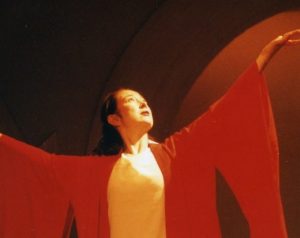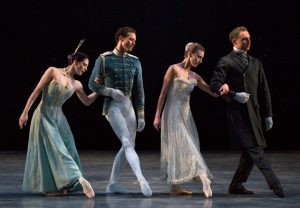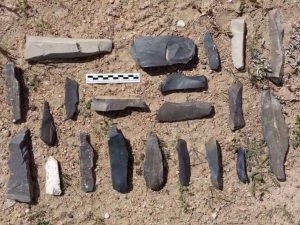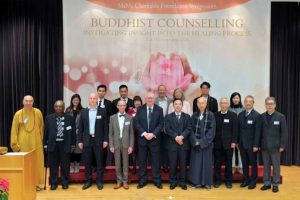The Metropolitan Museum of Art in New York City will present Mandalas: Mapping the Buddhist Art of Tibet, an exhibition that will showcase a wide range of Himalayan Buddhist devotional art. Scheduled to open on 19 September, the exhibition will feature more than 100 items, including paintings, sculptures, textiles, costumes, weapons, musical instruments, and various ritual objects, primarily dating from the 11th–15th centuries. The exhibition will also include a contemporary installation by Tibetan artist Tenzing Rigdol, commissioned by the museum specifically for this event and to be displayed in the atrium of the museum’s Robert Lehman Wing.
The exhibition has received funding from the Placido Arango Fund and Lilly Endowment, with additional support from the Florence and Herbert Irving Fund for Asian Art Exhibitions and the E. Rhodes and Leona B. Carpenter Foundation.

The Met’s Marina Kellen French director and chief executive, Max Hollein, described the exhibition as “an unprecedented exploration of sublime historical Himalayan Buddhist devotional art” that is aimed at deepening the public’s understanding of how and why these works were created. “At the center of the galleries, Tenzing Rigdol’s powerfully immersive and compellingly relevant mandalic installation draws on the foundation of the rich historical material to create a space for inspired contemplation,” Hollein added. (The Metropolitan Museum of Art)
The exhibition will examine various thematic components of Tibetan mandalas, which are intricately designed diagrams used in Vajrayana Buddhist practice, and will highlight the specific iconography that helps guide individuals on their spiritual path toward enlightenment. The galleries will focus on key aspects of Tibetan artistic production: monastic teachers who interpreted esoteric texts and established lineages; bodhisattvas who assist practitioners; protectors of the Buddhist teachings; and tantric deities that symbolize enlightenment. The final gallery will feature a collection of mandalas, complex diagrams that integrate deities and iconography presented in other galleries. Within the context of Tibetan Buddhism, mandalas and the associated tantric rituals are believed to offer access to true reality.

182 x 182 centimeters. From rossirossi.com
The centerpiece of the exhibition is Tenzing Rigdol’s contemporary mandala, which addresses modern issues such as climate change and social responsibility. Speaking about his work, Rigdol explained: “I’m trying to explore the quintessential tantric idea of universality and oneness and how intricately interconnected we all are. It is said that when the Buddha reached enlightenment, he looked at a leaf and on that leaf he saw stars, he saw rain, he saw soil, he saw air, and, in essence, he saw interdependency.” (The Metropolitan Museum of Art)
Mandalas: Mapping the Buddhist Art of Tibet will feature exceptional pieces from the Met’s permanent collection and important loans from other institutions, such as the Asia Society Museum, the Rubin Museum of Art, the Newark Museum of Art, and Harvard Art Museums. Among the notable works on display will be two early mandalas from Tibet and examples from China and Nepal.
The exhibition will also include exquisite illustrated palm-leaf manuscripts of the Prajnaparamita and Gandavyuha, as well as significant monastic portraits from the 12th–14th centuries, such as those of Atisha and Shakyashribhadra, two Indian monks instrumental in bringing Buddhist teachings to Tibet. Additionally, a pair of portraits of the founders of Taklung Monastery will be on loan, along with musical instruments, dance costumes used in Buddhist festivals, and weapons and armor housed in monastic protective shrines.
The associate curator of South Asian Art at the Met and curator of the exhibition, Kurt Behrendt, highlighted the exhibition’s role in making complex Tibetan Buddhist traditions accessible to a broader audience. “The study of the Himalayas, especially Tibet, has advanced tremendously over the last 30 years,” Behrendt said, adding:
While many Himalayan books and exhibitions have focused on technical aspects of the Tibetan Buddhist tradition’s complexity, few have succeeded in demystifying these sublime artworks to make the key ideas broadly accessible. This show aims to explore how images were employed in the Himalayan context to present the great Tibetan tradition meaningfully and coherently. The juxtaposition of a contemporary mandala as an installation should resonate with today’s viewers in a way that helps to make the larger ideas in the show relevant.
(The Metropolitan Museum of Art)
In addition to the exhibition, The Met will offer a range of educational opportunities, including in-gallery conversations, panels, demonstrations, and hands-on activities for all ages. An illustrated catalogue will accompany the exhibition thanks to support from the Florence and Herbert Irving Fund for Asian Art Publications.
Mandalas: Mapping the Buddhist Art of Tibet aims to provide a comprehensive view of Tibetan Buddhist art and offer new insights into its religious, cultural, and artistic significance. The exhibition will open at the Met from 19 September, continuing through to early 2025.
See more
Exhibition at The Met to Explore Himalayan Buddhist Devotional Art Throughout History (The Metropolitan Museum of Art)
Mandalas: Mapping the Buddhist Art of Tibet (The Metropolitan Museum of Art)
Related news reports from BDG
“Tree and Serpent” Exhibition Brings Buddhist Art to the Met in New York
Buddhist Artist Bernice Bing Receives Solo Show at the Asian Art Museum
Brooklyn Museum to Unveil a New Gallery Devoted to Buddhist Art
Dialogue Within and Without: Tibetan Artist Tenzing Rigdol on Looking After Artists and Buddhism in the Czech Republic
Buddhist-Inspired Abstract Artwork of Charmion von Wiegand to be Exhibited in Switzerland
Pin drop silence: a 21st-century Avalokiteshvara at the Met












